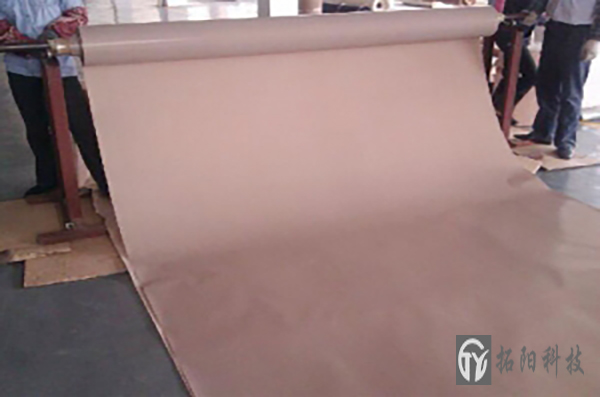High temperature resistant conveyor belt manufacturer Conveyor belt Lacing operation shall be done before use, which can ensure the working efficiency and life extension of the conveyor belt. What are the ways in which the conveyor belt is tensioned? The following conveyor belt manufacturer will guide you to understand the tightening method and influencing factors of the conveyor belt in detail.
1、 What are the tensioning methods of conveyor belt?
1. Structure elongation, which is mainly caused by the fabric weaving pattern rather than the fabric materials used. In ordinary woven fabrics, bent warp threads will be straightened when a load is applied, causing the conveyor belt to elongate, and some of the elongation cannot be restored to the original state.
2. Elastic elongation refers to the partial elongation on the conveyor belt when starting acceleration or braking deceleration. Nylon conveyor belt has good elasticity, high strength, impact resistance, good bending resistance, good flexibility, good channeling performance, and small use elongation. It is suitable for medium and short distance, high load, and high-speed material transportation. After the applied tension or stress is eliminated, the elongation almost completely returns to the original state.
3. Length change, including the length change caused by the elongation of basic fiber structure, as well as the elongation of part of the elasticity and the unrecoverable part of the structure.

2、 The take-up travel of the conveyor belt depends on the following factors
Whether there is a trial run period for using mechanical joints. Any unrecoverable length change can be easily eliminated before the final sulfur (chemical symbol: S) joint is made. Start or brake mode. The tension stroke required for direct starting and braking is much larger than that for controlled acceleration starting or deceleration braking. Elongation and elongation characteristics of the conveyor belt used. Frequency of start and stop of full load conveyor belt.
The tension device shall have enough travel to adapt to the fluctuation of acceleration or deceleration without the tension device hitting the baffle. The tensioning device should also have several "usable" stock conveyor belts, so in case of failure, it is not necessary to use two joints to access a section of conveyor belt. In addition, the tension stroke should also adapt to the length change of the conveyor belt caused by elongation or contraction.
The above is about the belt tensioning method and influencing factors introduced by the conveyor belt manufacturer. I hope it will be helpful to you. For more information about conveyor belts, please visit our website.
















